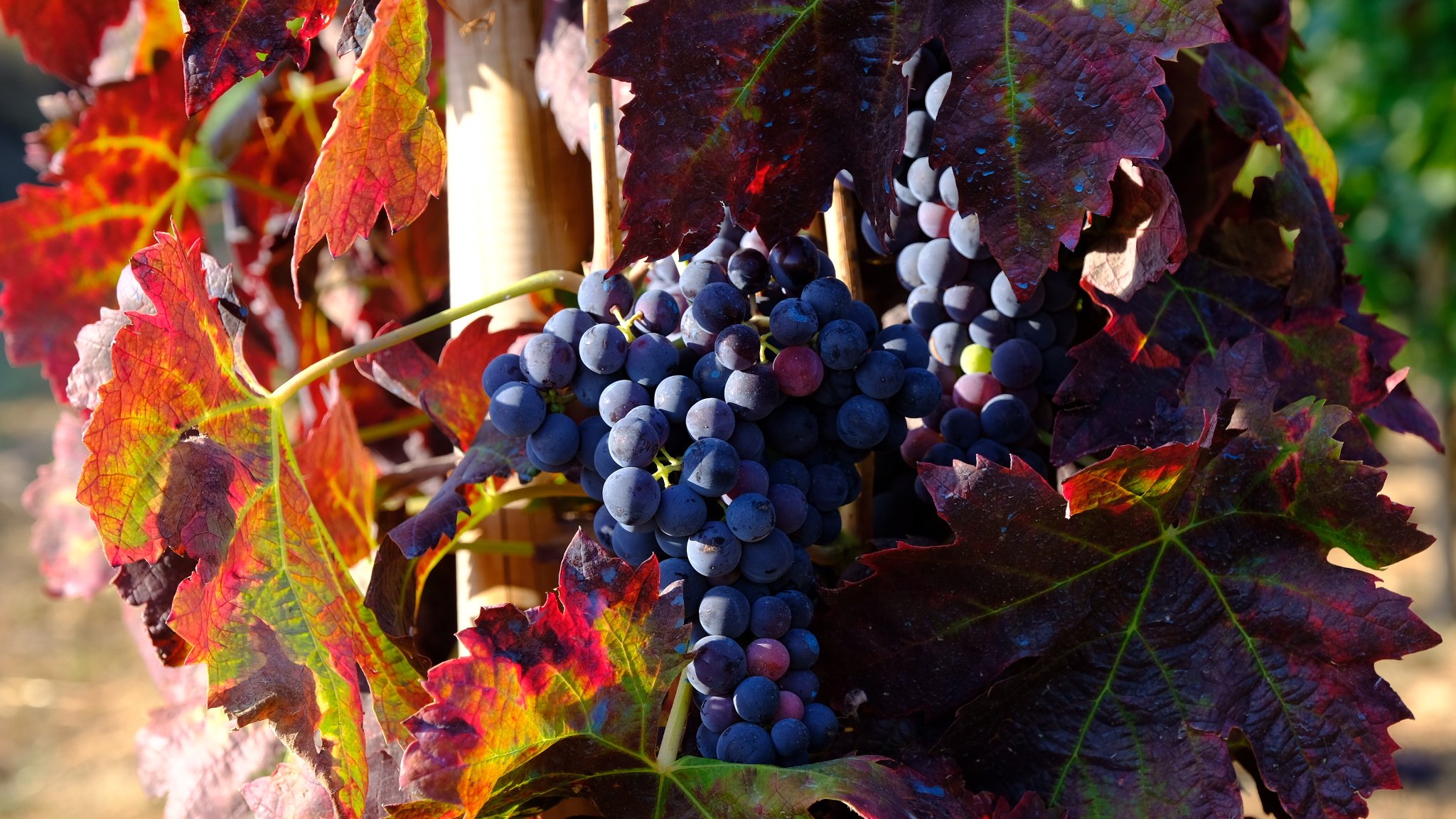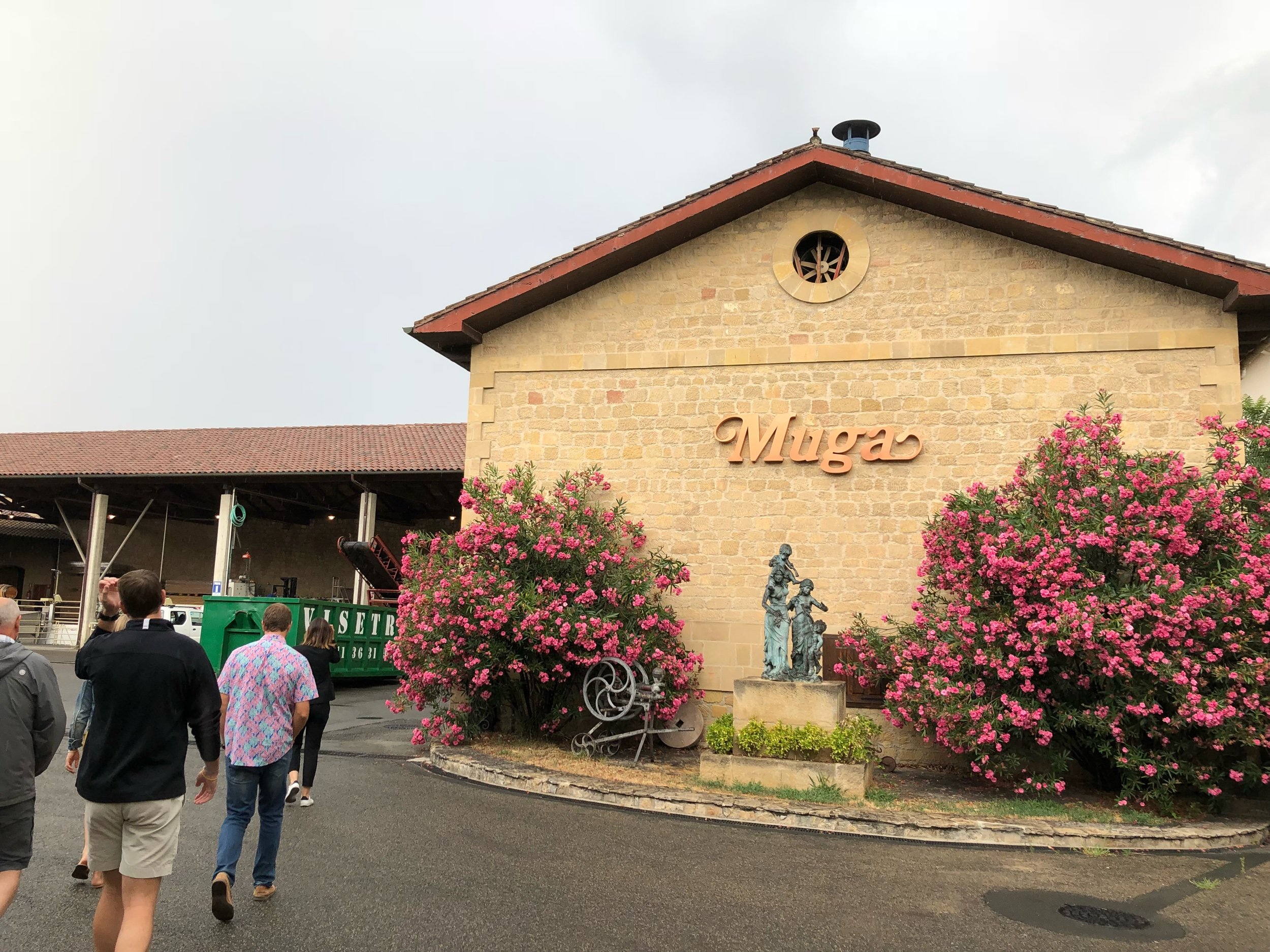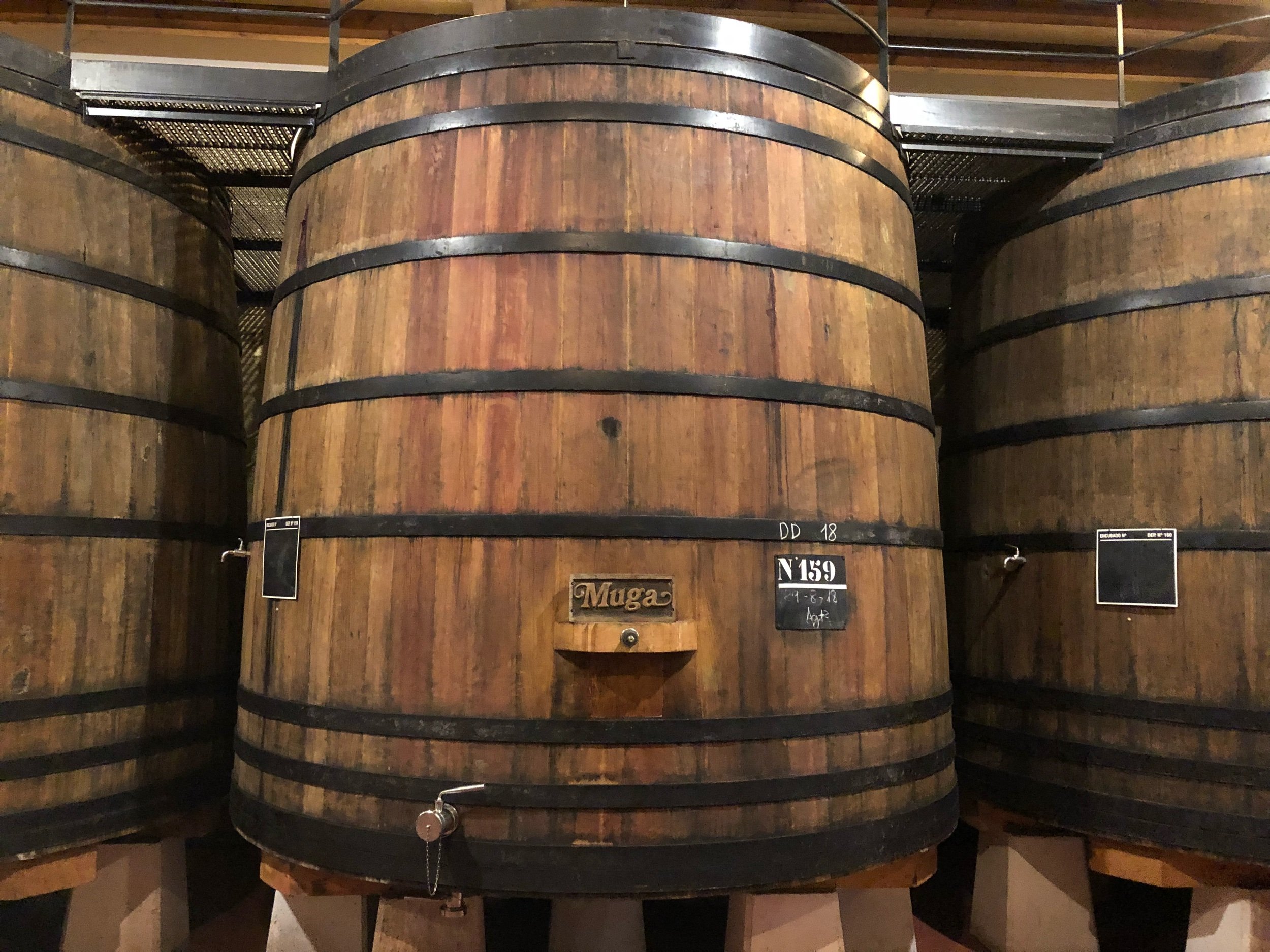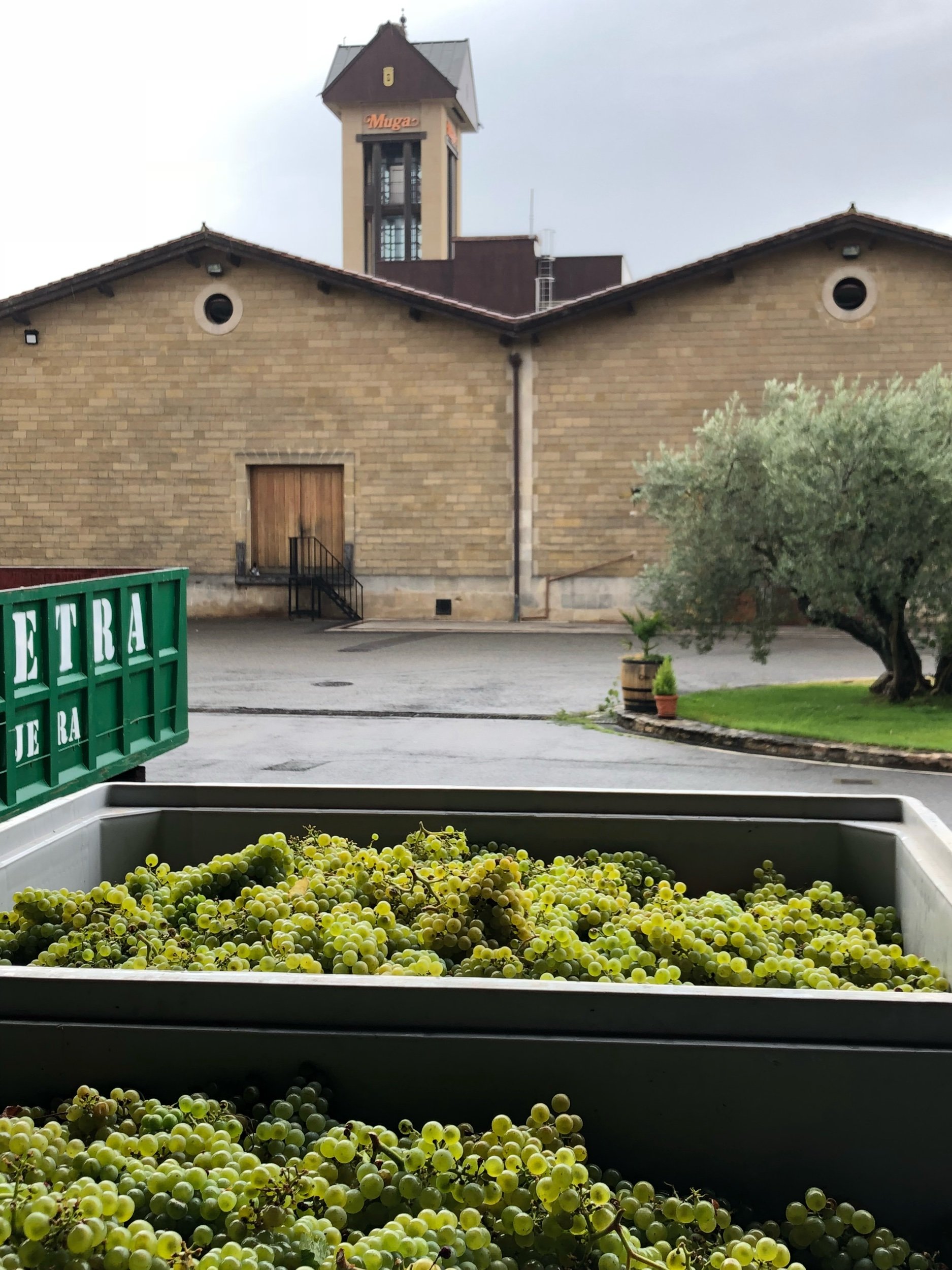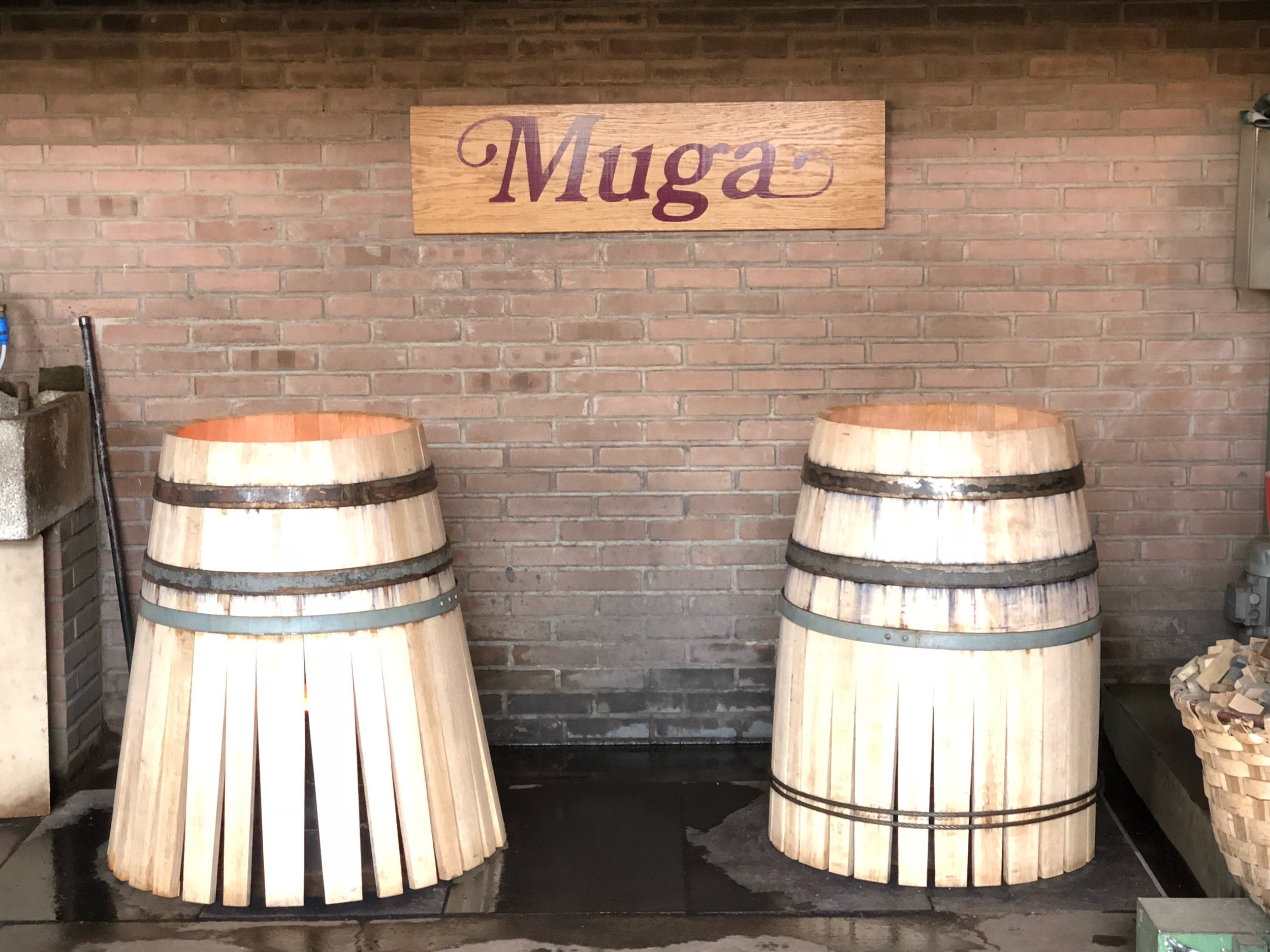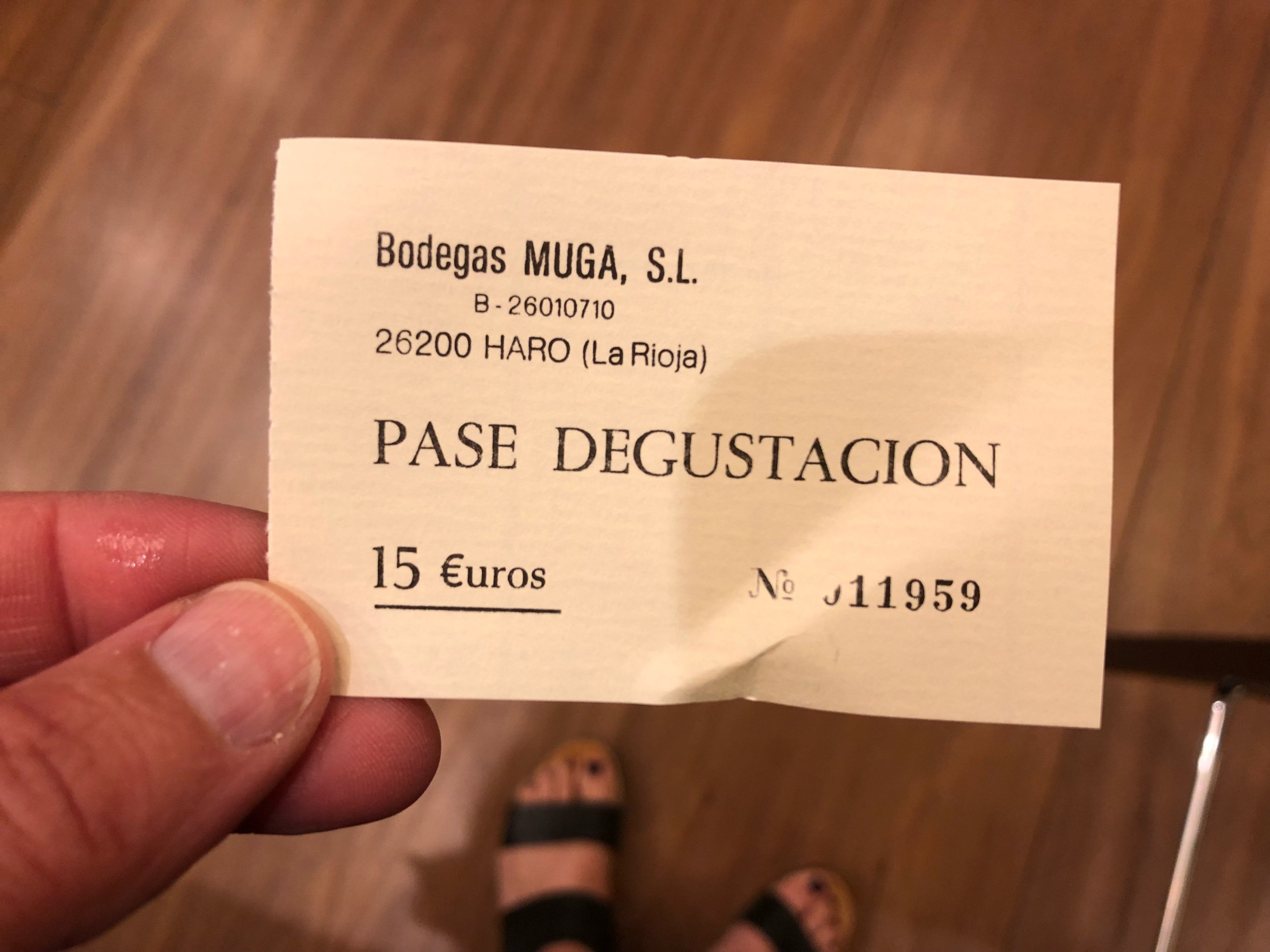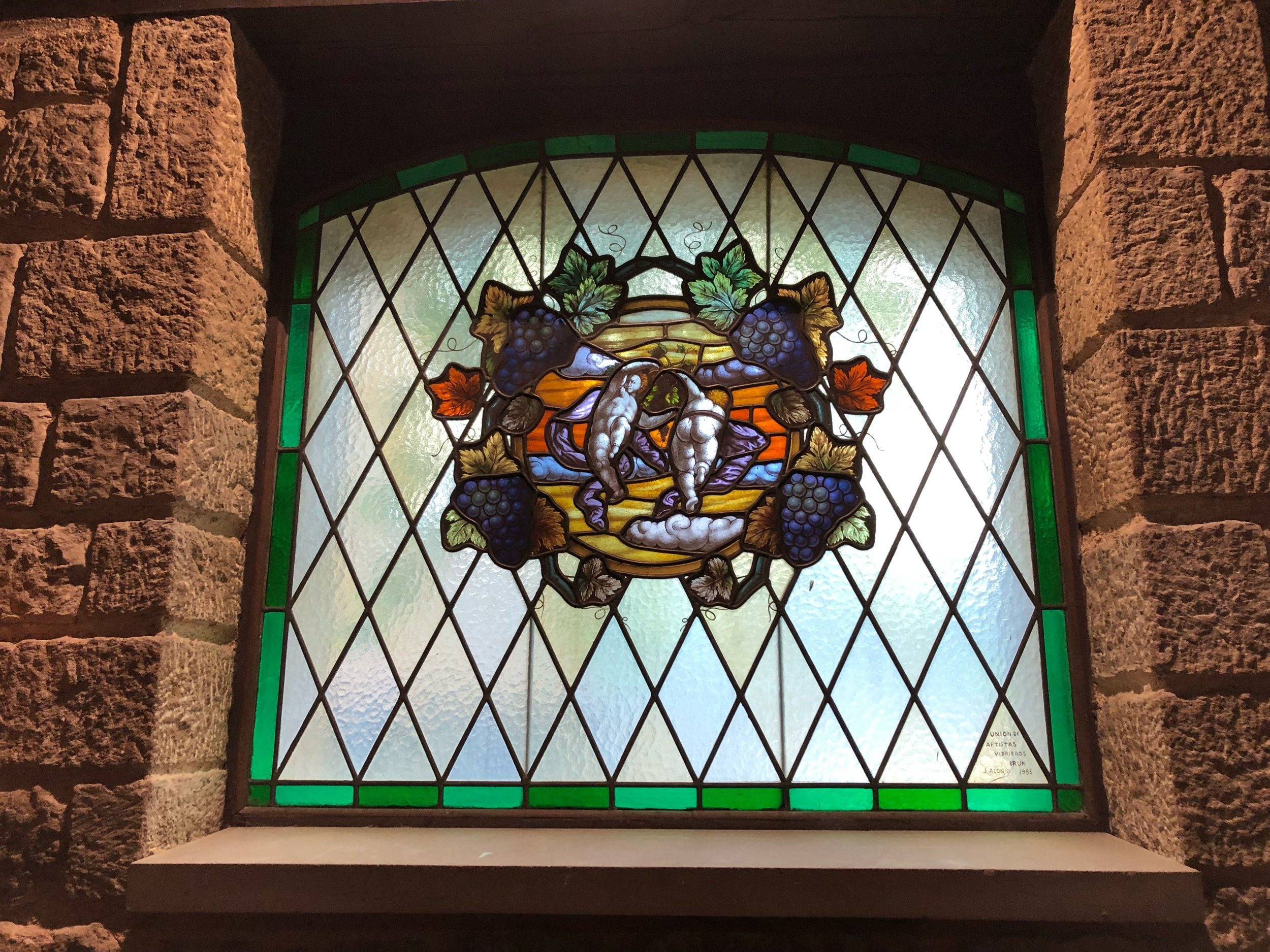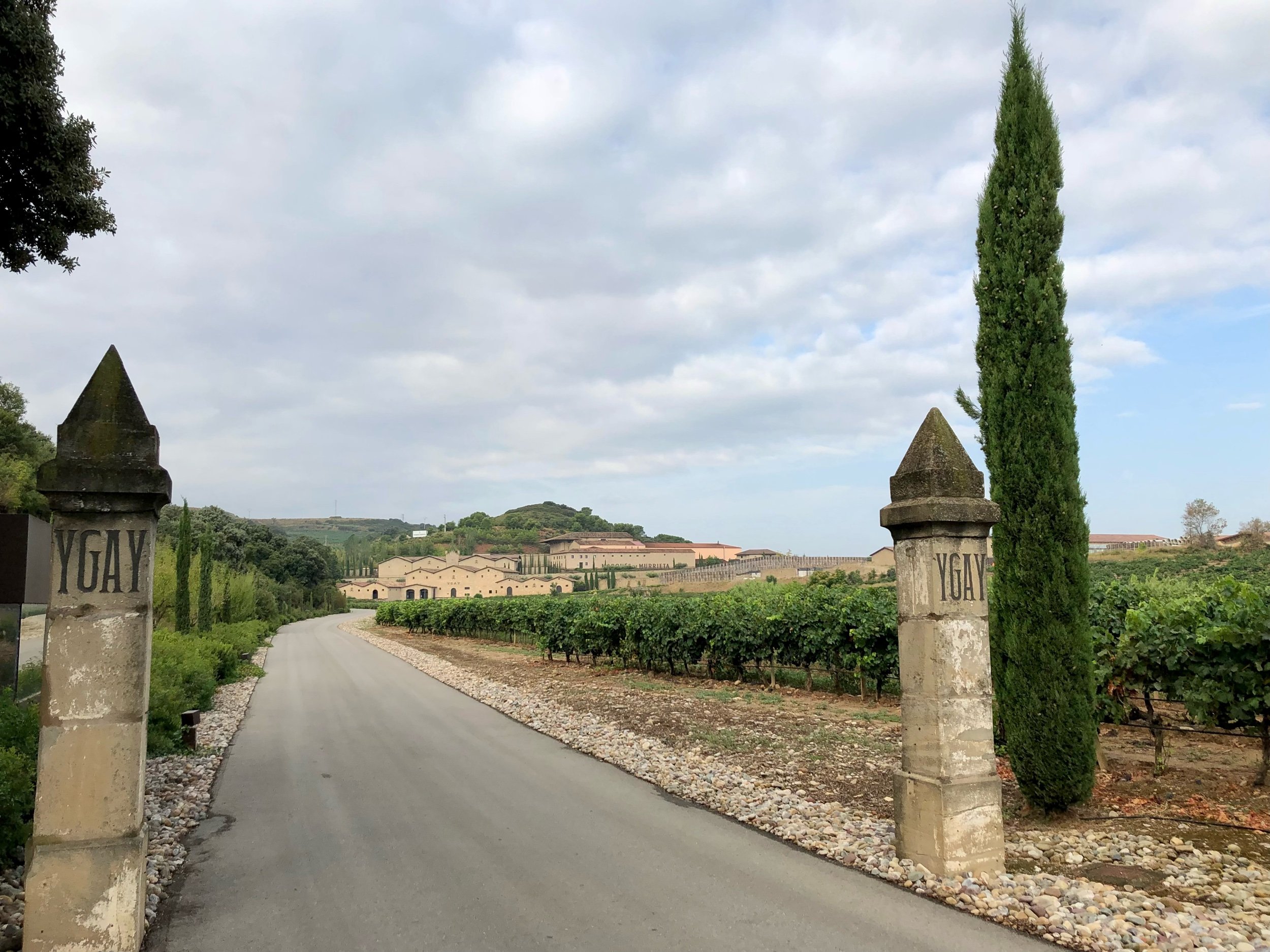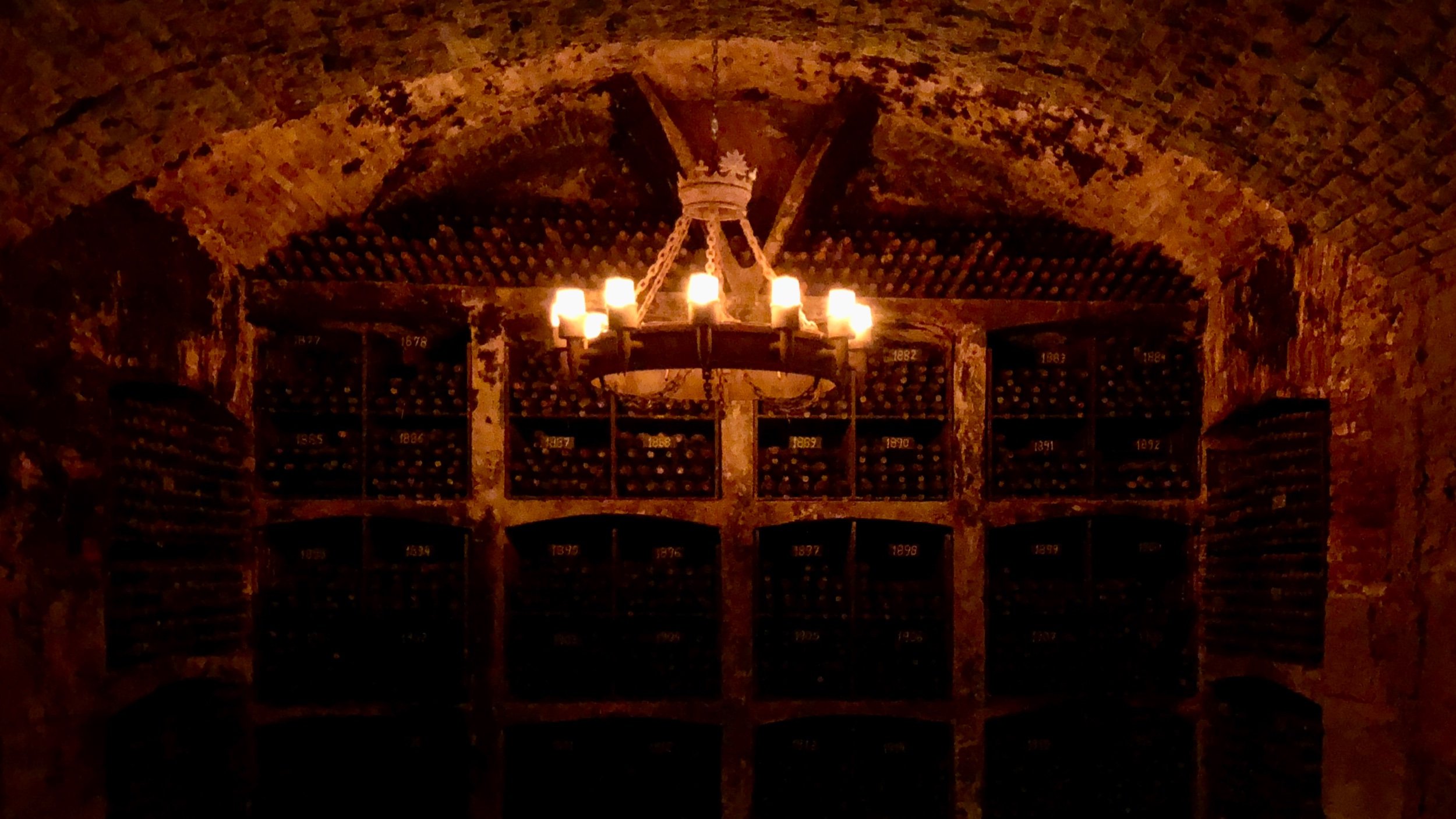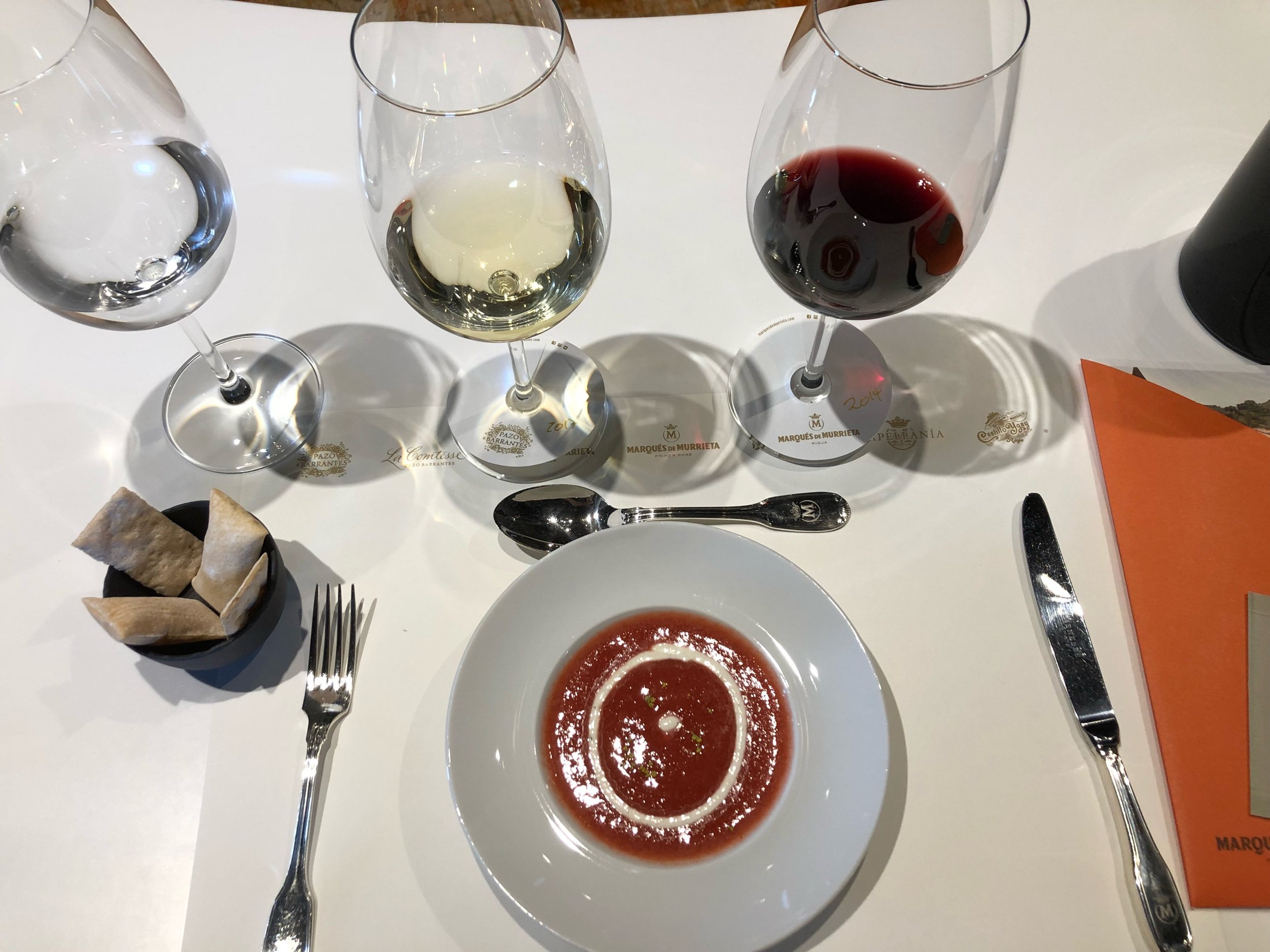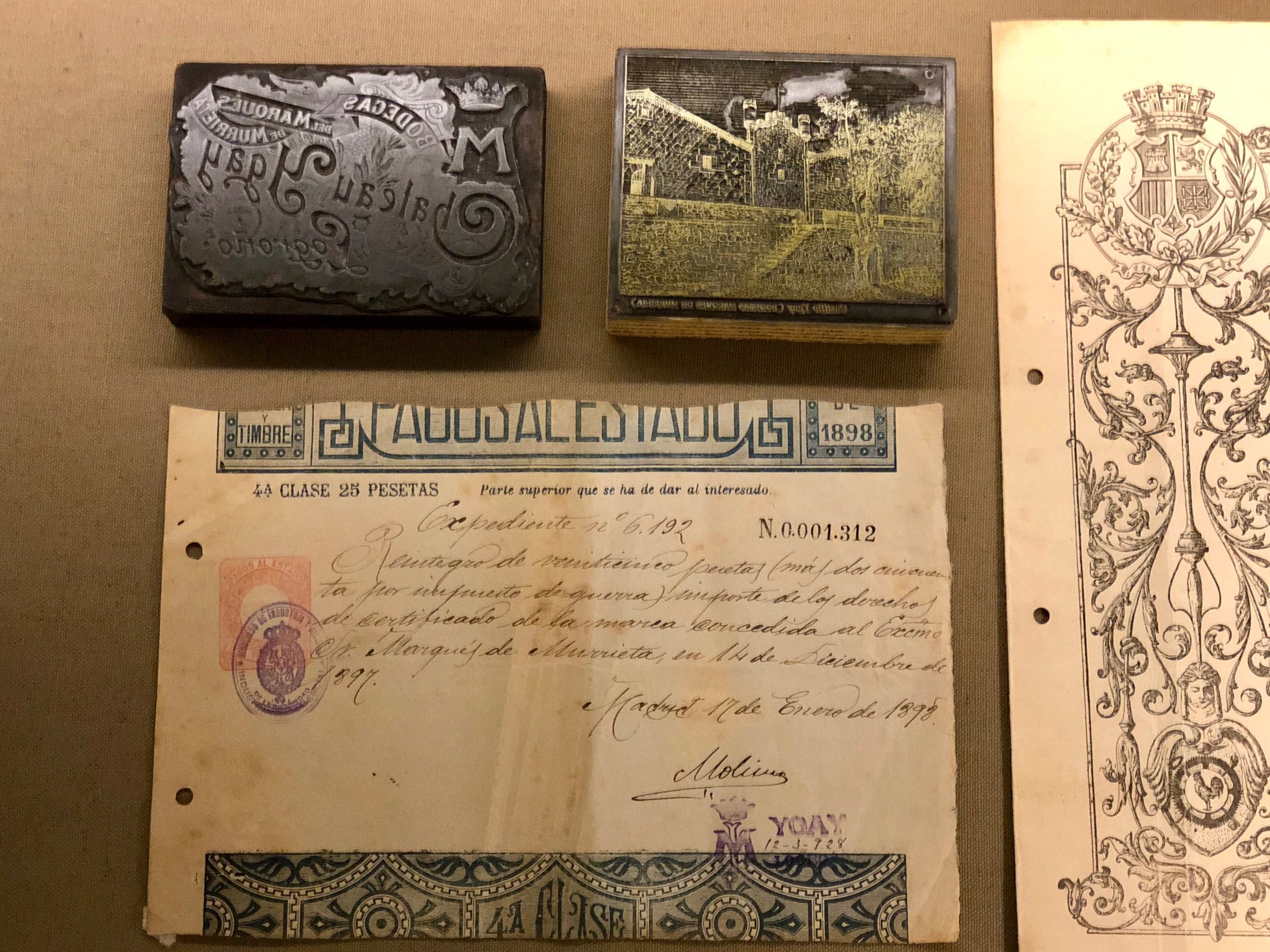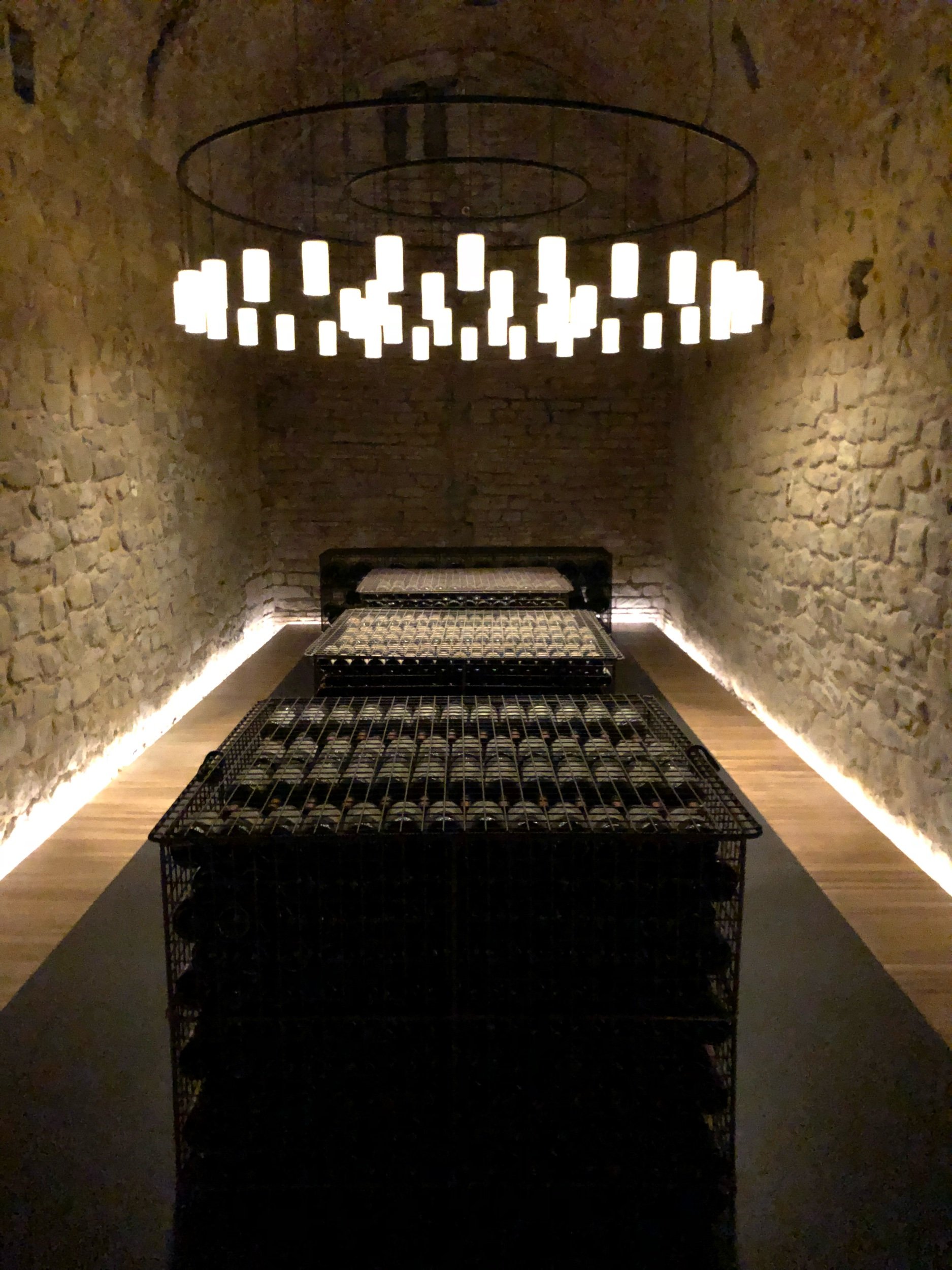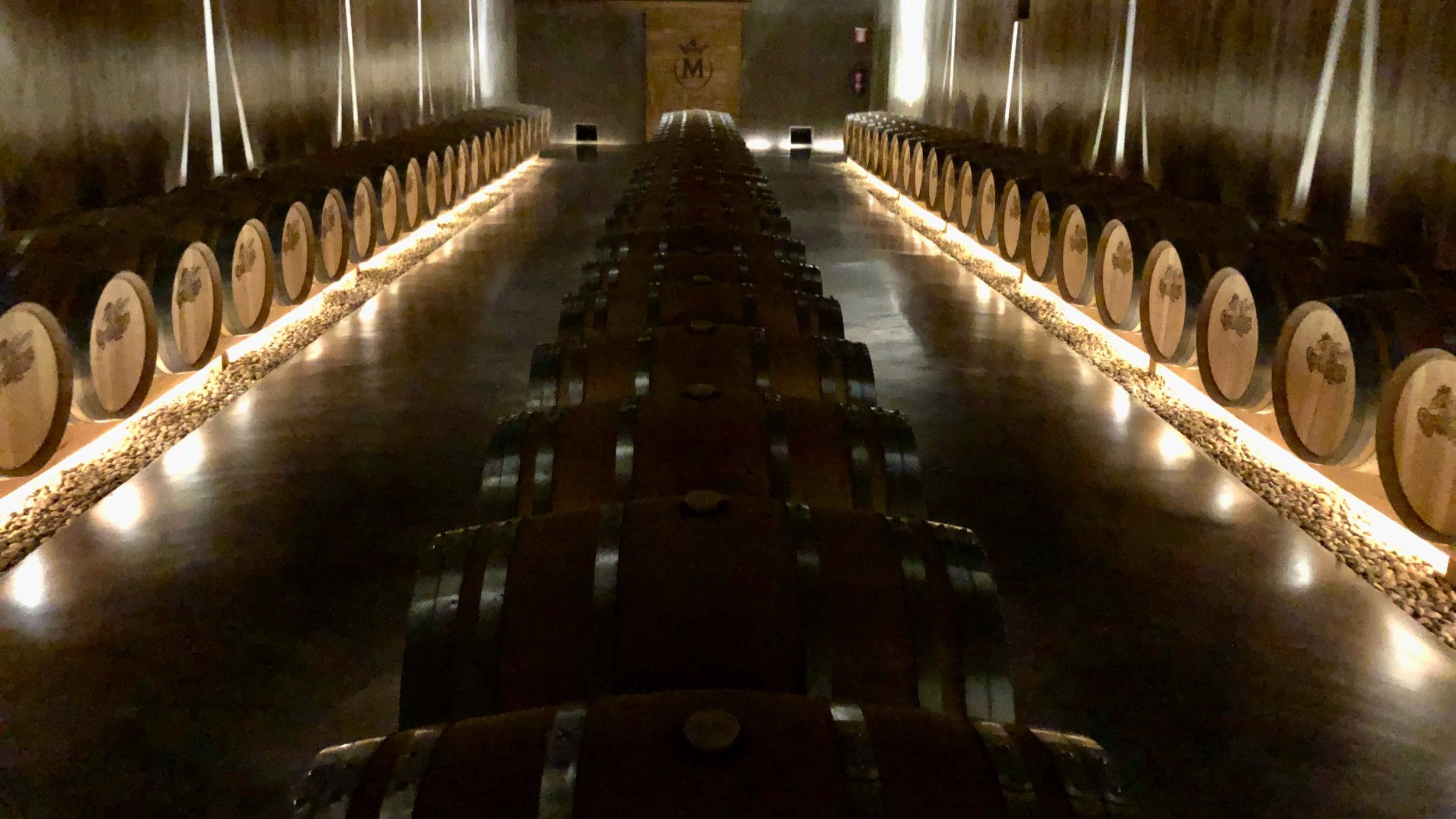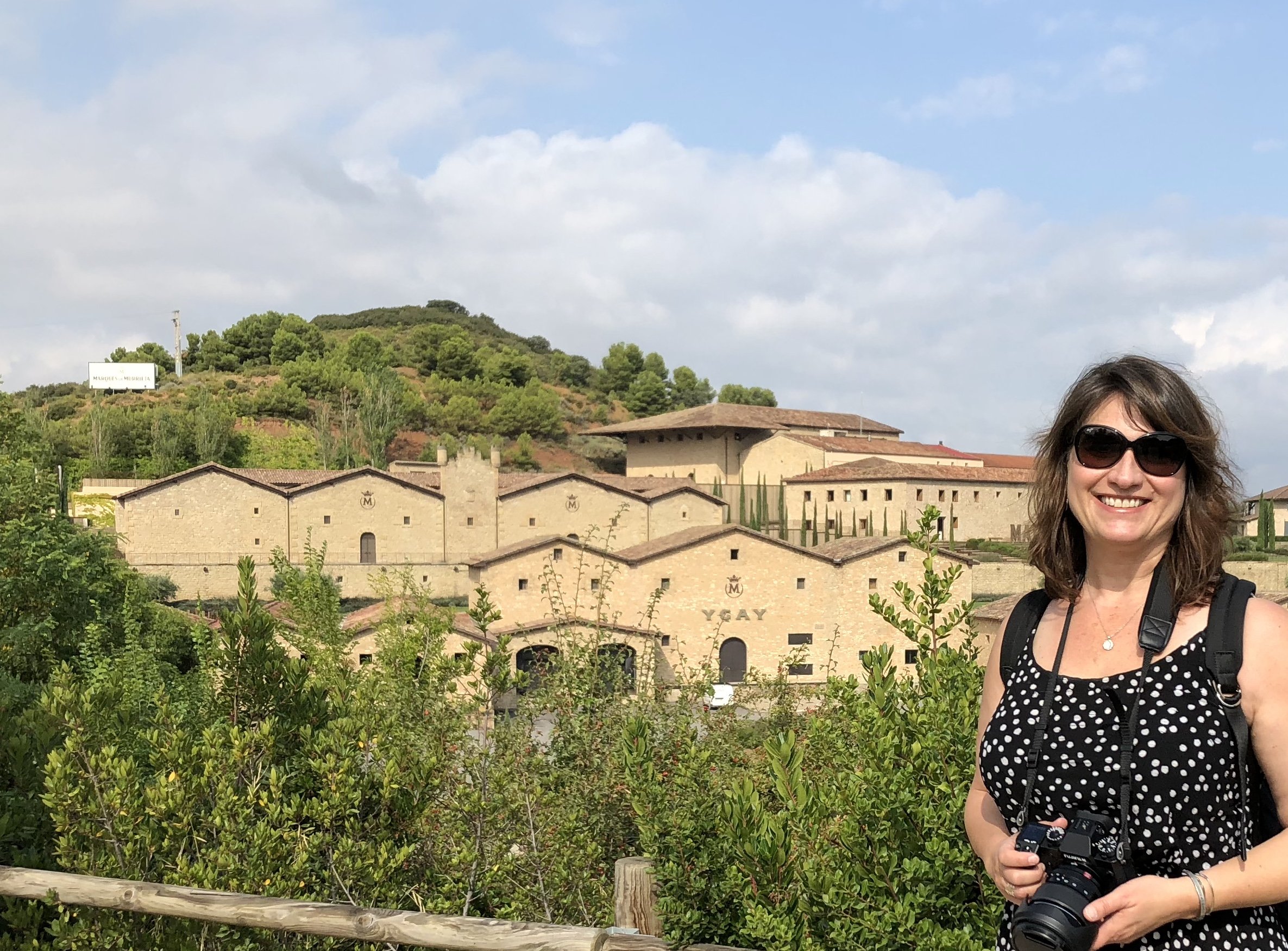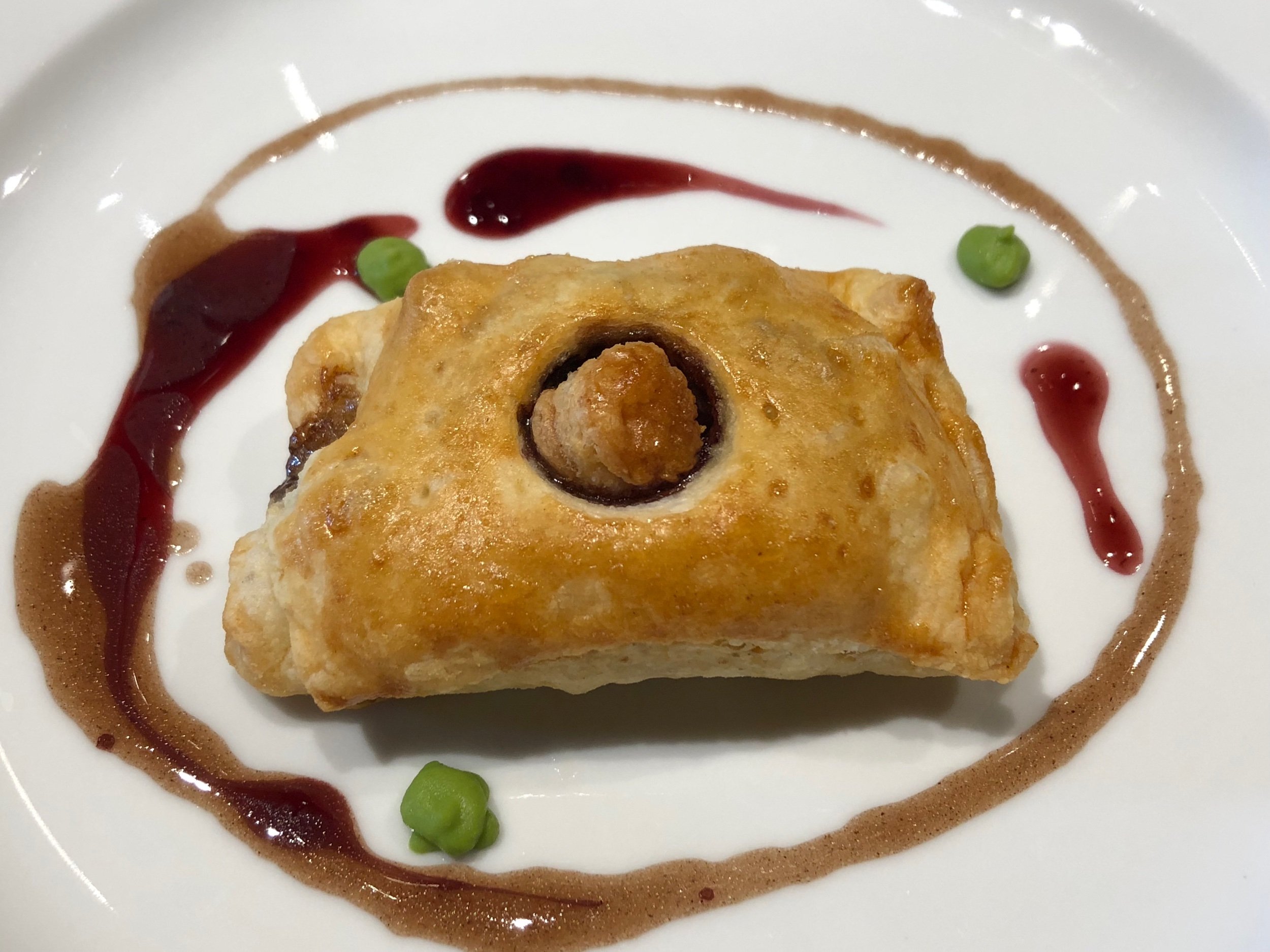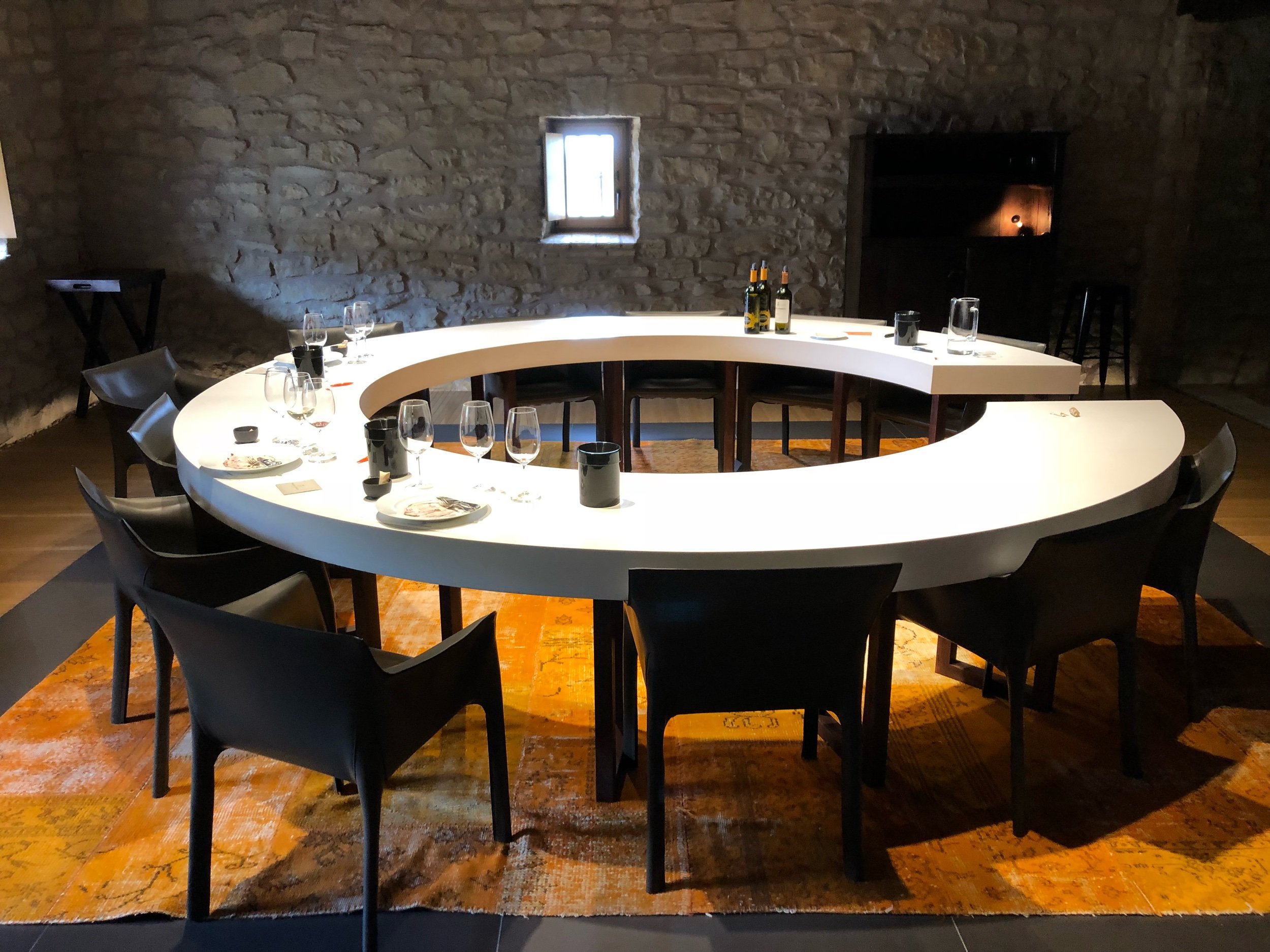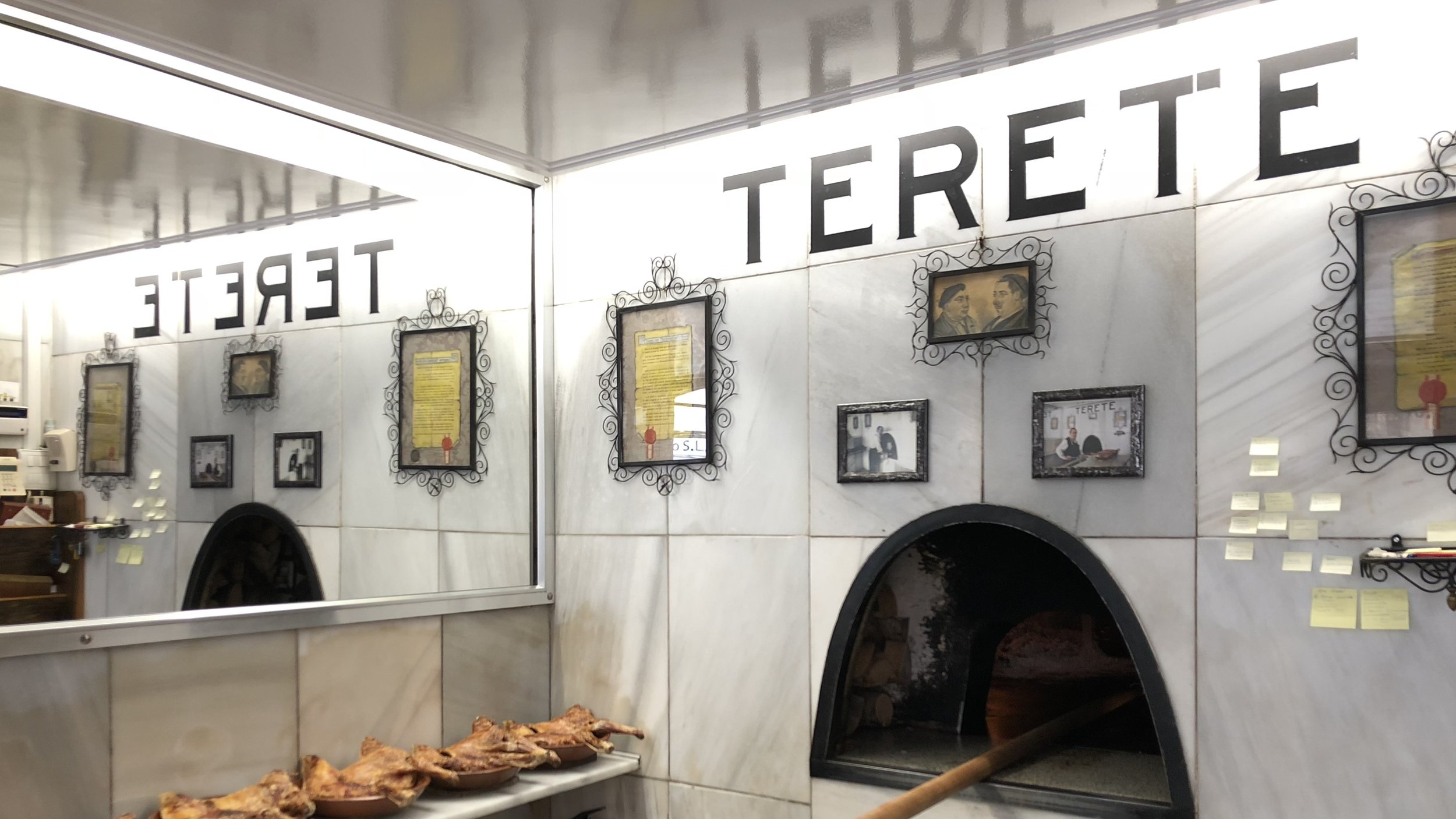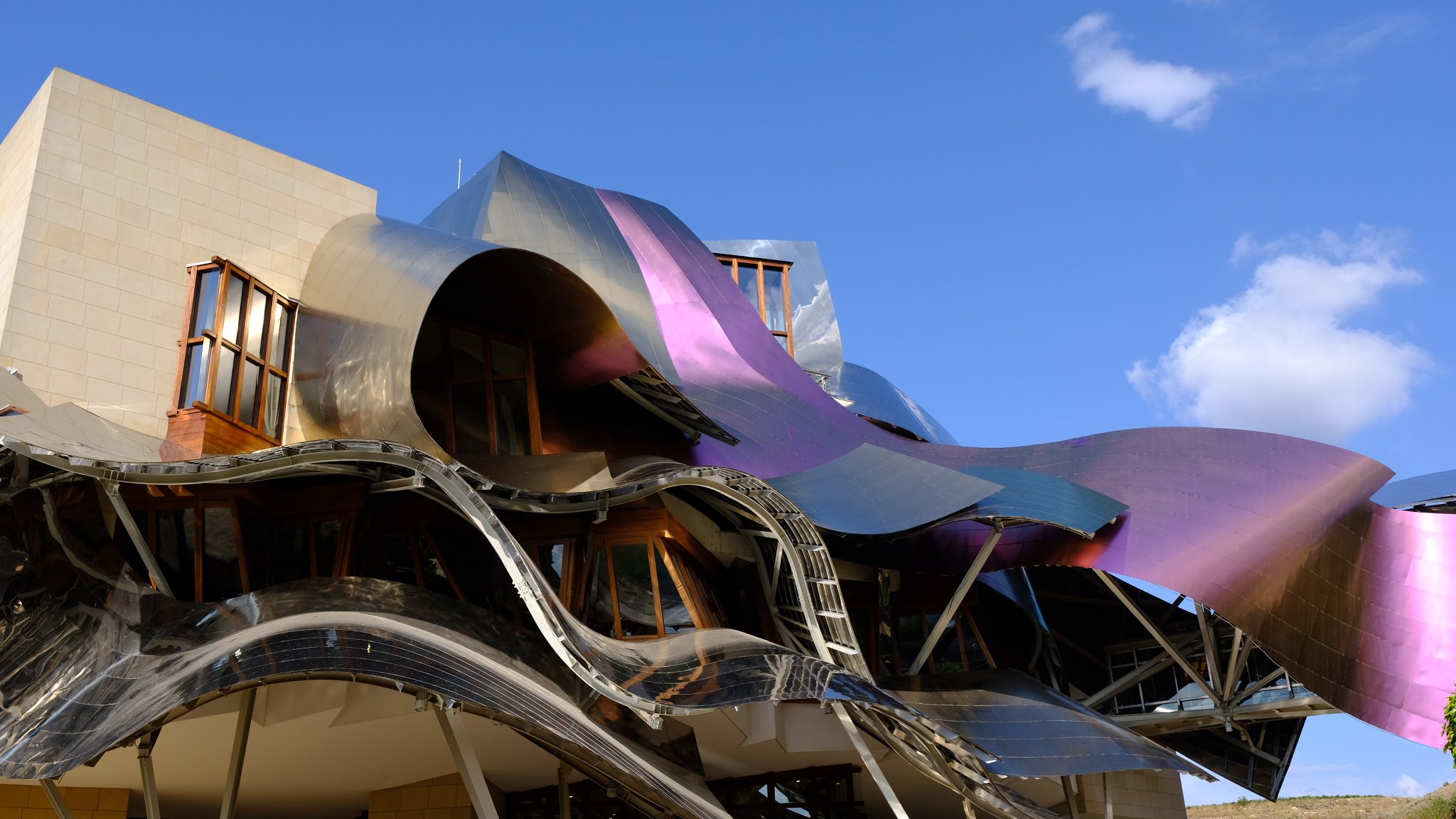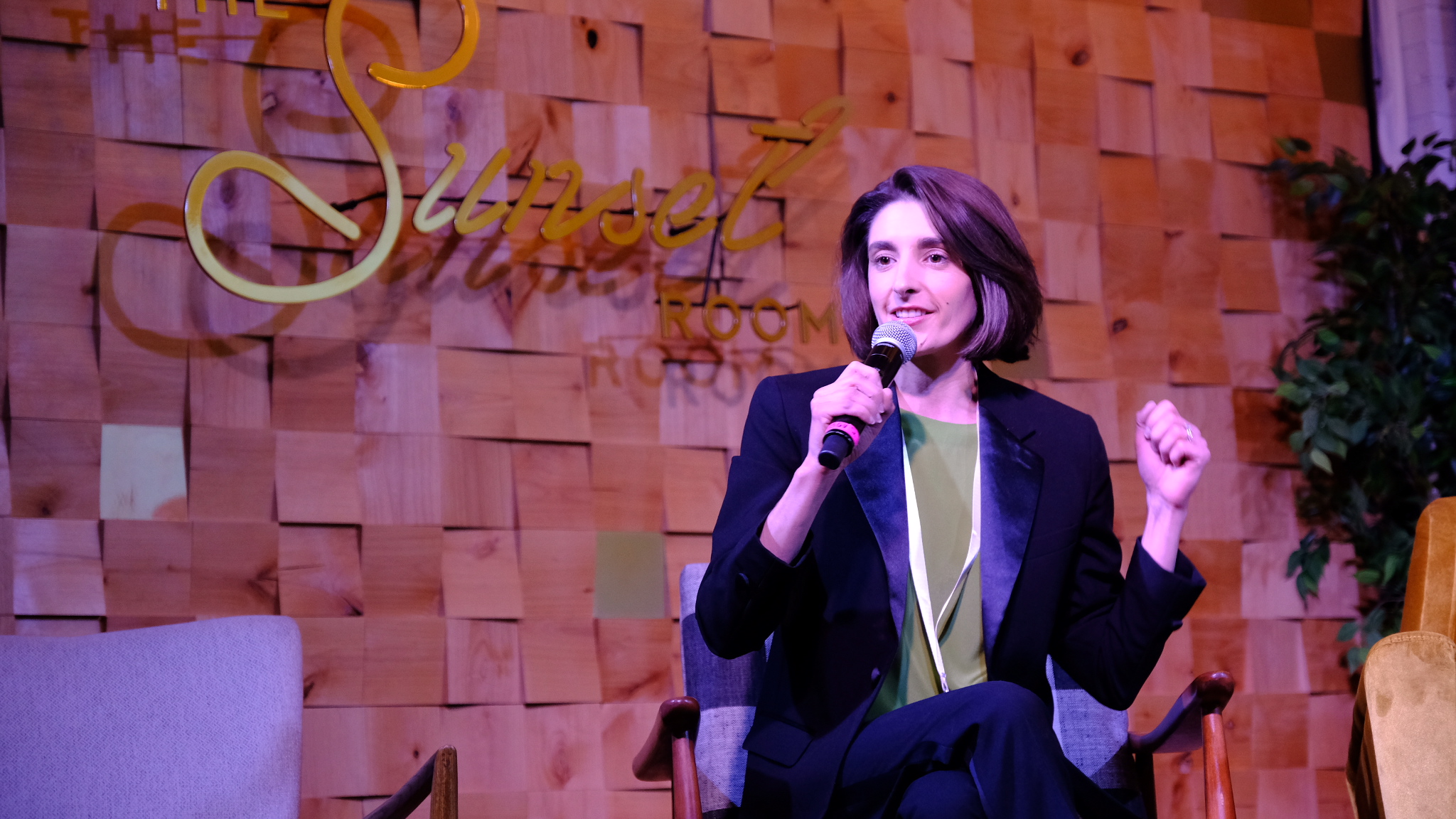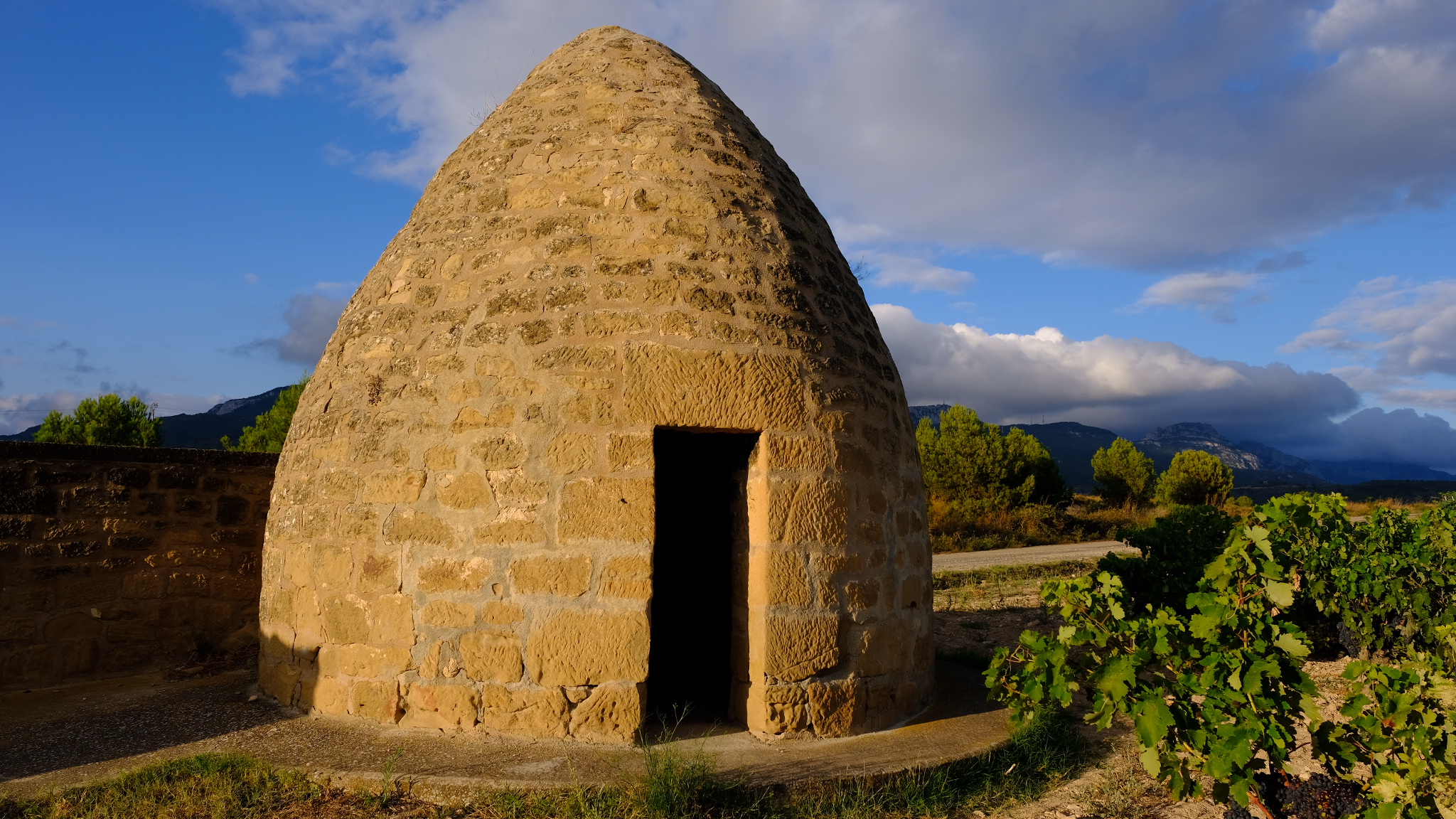Remembering Rioja
Three years ago, I visited Spain’s Rioja region. Almost immediately after my return I began plotting the next big trip. Yet as the COVID-19 pandemic raged these past two years, we sheltered in place and socially distanced. I often scrolled through my photos of that trip - slumped on my sofa and clad in athleisure, longing for the ability to travel again. Instead of exploring new places, we hunkered down at home. We Zoomed. We doom-scrolled. We languished. That’s why it was so special to reunite with my family in December when we journeyed from three different states to stay together in a Chicago Airbnb for a few days. We hugged. We dined around the same table. And we enjoyed many bottles of wine. Together.
Decanting the 2007 Castillo Ygay - December 17, 2021
Among those many bottles, this 2007 Castillo Ygay Gran Reserva Especial from Marqués de Murrieta stood out. After laying down in my cellar for a few years, I hauled it in my suitcase to share with my family. This wine is special - not just because the 2010 vintage was Wine Spectator’s No. One Wine of 2020 and received high ratings, but because I loved my visit to the Marqués de Murrieta bodega, inspired by a tip from the sommelier at a Miami José Andres restaurant in 2018.
This bottle proves that patience is a virtue. After having 8 years of aging at the winery, Marqués de Murrietta released it in 2015. Time softened the tannins and created a velvety texture with seductive notes of bright baked red fruits, spice, herbs, soft oak, tobacco, and supple leather.
This wine is a blend of Tempranillo (86%) and Mazuelo, the Rioja region’s name for Carignan (14%). The Castillo Ygay is from a single vineyard planted on the estate in 1950, spending 28 months in 225-litre oak barrels (French oak for Mazuelo and American oak for Tempranillo) and settling in concrete vessels before bottling.
Rioja Alavesa Vineyards Against the Backdrop of the Cantabrian Mountains
The Rioja Region
After enjoying that bottle of Castillo Ygay Gran Reserva Especial from Marqués de Murrieta with my family, the memories of my trip to the Rioja region flooded my mind. So I decided it was finally time to take a trip down memory lane to share the places I recommend for a future visit to Rioja.
First some details about the region itself. Rioja is one of only two regions in Spain, along with the Priorat, to achieve the Denominación de Origen Calificada designation. The designation specifications control the wine production areas, grape varieties, maximum allowable yields, and approved vinification and ageing techniques to bear the name Rioja on the label.
La Rioja is located in Northern Spain, just over three hours north of Madrid and 90 minutes south-west of San Sebastián at the southern foot of the Sierra Cantabria mountain range. The Rioja wine region is comprised of three subregions: Rioja Alta, Rioja Alavesa, and Rioja Oriental (known as Rioja Baja prior to the 2017 reclassification). The River Ebro divides the first two of those - with Rioja Alta being at the highest elevation and producing some of the finest wines from the region. Rioja Alta is home to the town of Haro, which was the epicenter of the region’s wine production in the 1800s when phylloxera’s siege on French wine production created demand for the wines in Rioja.
Rioja Wine Classification System
A wine labeled “Rioja” must be at least 75% Tempranillo, according to the wine law of the region established by the Consejo Regulador DOCa Rioja. Rioja wines are classified by the length of time the wine was aged in oak (from zero for a Joven/Generic to 18 months for Gran Reserva) and total aging before release (from zero for Joven/Generic to 5 years for a Gran Reserva). Since Tempranillo is a medium-high acid and medium-high tannin varietal suited to long aging times - like Bordeaux, Sangiovese, or Nebbiolo, the longer the time spent on oak, the more elegant it will become. With aging, the wines also become slightly oxidized creating a garnet color along the rim as they develop with characteristic notes of baked fruit, dill, and leather.
In late 2017 the classification system changed to allow wine labels to recognize terroir by the addition of the specific village or municipality where the grapes were grown. In Rioja, there are 145 municipalities - with over half in Rioja Alta, 50 in Rioja Oriental, and 18 in Rioja Alavesa.
Rioja Alta
Bodegas Muga
Muga is a great starting point for exploring the Rioja region. It’s located in Haro within a stone’s throw of La Rioja Alta and Lopez de Heredia bodegas, which could be visited on the same day with some advance planning.
Muga offers a wonderful tour of the production facility and traditional winemaking methods, including their use of egg whites to filter its wines. After the wines have been aged and before bottling, they introduce egg whites into 17,500 liter oak containers; the proteins in the egg whites bind with any solid particulates in the wine to help fine - or clarify the wine and also minimize bitter tannins on the palate. Only two to three egg whites are used per 100 liters of wine. Thus wines from Muga are not vegan, but they are sustainable as the remnant egg whites and lees are used for composting. Muga is also one of the few wineries in the world that also has its own cooper. After sourcing their French and American oak, they make and toast their own barrels. When I visited, Muga was harvesting and crushing white grape varietals (seen above) and bottling. It’s always an exciting time to visit any winery during harvest season to see all aspects of the winemaking process as I did on that trip in September 2018.
The tour I booked included a tasting of two entry point wines produced by Muga: the 2017 Rioja Blanca (Viura with a touch of Malvasia and Garanacha) and the 2014 Rioja (a Tempranillo based red wine). At the price of only 15 Euros, the tour and tasting was a great value. Additional wines were available for tasting and purchase after the tour.
Visit Muga online at www.bodegamugas.com
Marques de Murrieta - September 2018
Bodegas Marqués de Murrieta
I visited Bodegas Marqués de Murrieta in Logroño, located on the southern end of Rioja Alta subregion where the original estate was built in the 19th Century. I took a winery tour followed by a wine tasting with food pairings for a total of just 38 Euros. The tour walked through the vineyard grounds and into the production facilities, wine caves, cellars, and beautiful rooms of the estate where some of the winery’s historical records were displayed. It’s a beautiful property with a rich history.
After the tour, we settled into a beautifully private dining area where the tasting paired a 2017 Albariño Pazo Barrantes from the Rias Baixas D.O. in Galicia with a chilled strawberry-tomato soup and the 2014 Marqués de Murrieta Reserva (a blend of Tempranillo, Graciano, Mazuelo, and Garnacha) with a pastry filled with beef in red wine sauce and peas. A tasting room in the gift shop provided an opportunity to try other varietals and vintages, so I enjoyed the rosé and another taste of the 2007 Castillo Ygay Gran Reserva Especial. A perfect ending to a wonderful visit. See photos below from that visit.
Visit the winery at www.MarquésdeMurrieta.com
Bodegas López de Herredia
I was unable to book a tour at the esteemed López de Herredia but I enjoyed a glass of wine in the stunning boutique adjacent to the historic winery after my tour at Muga. The boutique was designed by Zaha Hadid and contains the original Belle Epoque stand introduced at the World Fair in Barcelona in 1910. It’s a beautiful contrast in architectural styles and signifies the importance of old world traditions in the present.
Mercedes López de Herredia is the winemaker and great-granddaughter of the winery’s founder who established the first bodega in Haro in 1877, and it remains the third oldest in the Rioja region. She maintains the traditional winemaking methods and continues to produce award winning wines. Her sister, María José López de Heredia runs the winery operations, making this a fully woman-owned and operated winery.
Visit López de Herredia online at www.lopezdeheredia.com
Lunch at Terete Restaurante
Carnivores must dine at Terete in the town of Haro for lunch between tastings. A classic wine pairing with the red wines of Rioja is lamb. Terete bakes young lamb in a wood-burning oven and renders the meat fall-off-the-bone tender. I don’t eat a lot of lamb - or any other red meat, but this was a worthy exception. I enjoyed the lamb with some roasted red peppers and a green salad, which paired perfectly with a glass of Viña Cristina Rioja Reserva 2011. That meal for one set me back 36 euros and fortified me for the afternoon wine tastings. Though an afternoon siesta would have been more apropos.
Visit Terete Restaurante at www.terete.es
Rioja Alavesa
The Rioja Alavesa is situated within Basque Country and is home to the charming hill town of Laguardia. Visit Laguardia’s Plaza Mayor town square and catch the figurines that emerge from the clock tower each afternoon on the top of the hour and dance to traditional Basque music. I caught the event from my table outside of Arburi Enoteca, where I enjoyed a glass of wine and a Basque sausage and white bean stew.
Laguardia
Bodegas Artadi
I visited Artadi after reading about its controversial decision to quit the Rioja DOCa appellation in 2015 in protest of the old classification system that focused exclusively on aging rather and failed to recognize terroir. Artadi’s modern approach is also seen in its modern tasting room structure. The highlight of this tour was being transported by Artadi’s 1950s London taxicab to the acclaimed Viña el Pisón vineyard.
For just 25 Euros, Artadi’s tour included tastings of theRioja Viñas de Gain White made of Viura (the most common white varietal in Rioja); a Viñas de Gain Red; and a Pagos Viejos Red - a Tempranillo from Artadi’s 40-60 year old vines.
Visit Bodegas Artadi at www.artadi.com
Artadi
Tempranillo in Artadi’s Viña el Pisón vineyard
Bodegas Marqués de Riscal
This is another of Rioja’s oldest wineries marked by the Frank Gehry designed hotel on its property. The avant-grade design is a stunning contrast to the Bordeaux-inspired wine making facilities. This winery produces a stunning 5 million bottles per year - no doubt you’ve seen its Rioja in your local wine shops - often wrapped in gold netting. The founder introduced the gold netting in the 19th century as a quality mark and to prevent counterfeiting.
The tour at Marqués de Riscal walks the grounds and finishes with a tasting paired with chorizo and picos - tiny baguette shaped crackers served at tapas bars throughout Spain. The cellars of this winery hold all vintages of the wines it has produced since 1860, protected behind beautiful metal gates and coated with dust of all the years they slumber in the cool cellar. It’s a wonderful tour for the history and architecture of this unique place. For just 19 Euros, the tour included tastings of the Marqués de Riscal Verdejo (D.O. Rueda), Arienzo de Marqués de Riscal (D.O.Ca. Rioja), and Marqués de Riscal Reserva (D.O.Ca. Rioja).
Visit Marqués de Riscal at www.marquesderiscal.com
Hotel Marques de Riscal
Marqués de Riscal’s oldest vintages as seen on my September 2018 tour
Bodegas Ysios
Plan ahead to book a reservation at Ysios. When I visited in September 2018 they only allowed entry for pre-booked tours with no informal tastings. Designed by Spanish architect Santiago Calatrava, it is not to be missed. Despite the “no trespassing” signs, I wandered the grounds and snapped a few photos. If you look closely, in one of the photos below, you can see me reflected in the glass panes that tower high above the entry.
Visit Ysios online at www.bodegasysios.com
Bodegas Ysios in the morning fog
Bodegas Roda
I stopped by Roda for a quick tasting at their retail shop at the foot of the winery entrance. Roda has a small but lovely, modern tasting room that also can access the bodega’s caves. So after sampling the olive oils from the estate at the counter, I enjoyed my wine tasting by candlelight with a view of the barrels aging their wines in the cellar.
Visit Roda at https://roda.es/en/
Where to Stay
Before you travel, do a good search online to find a good match your travel preferences and itinerary. Culture Trip recently published this list of The Best Hotels in Rioja. There are many nice hotels with modern amenities in the larger towns like Logroño. Or you may want to splurge for a night or two at Marriott’s Hotel Marqués de Riscal in the tiny village of Elciego.
Since I was on a long trip and saving up for fancy meals and accommodations on my next stop in San Sebastián, I took a tip from a Spanish wine shop proprietor in Berkeley who recommended Hotel Villa de Ábalos in the Rioja Alta. Hotel Villa de Ábalos was not only central to all my explorations of La Rioja, but it also had all of the local charms you’d expect when visiting a small town in the wine country. Its tiny tapas bar flooded with locals each evening and created a charming cacophonous atmosphere in contrast to the quiet restaurant in the rear of the hotel where many hotel guests dine on local fare each evening and take their hearty, complimentary breakfast each morning. My four nights at Hotel Villa de Ábalos, including my nightly indulgences in the tapas bar and restaurant, only set me back 362 Euros.
I loved traveling solo in Rioja, but I do look forward to returning again soon with companions. Until then we’ll continue to research the region through wines purchased from our local wine shops - perhaps paired with chorizo simmered in Rioja wine or a lamb shank that roasts all afternoon and perfumes the house with comforting aromas. Then we’ll travel to Rioja in our minds - safely and together. Vale.
The Sierra Cantabria beyond the vineyards of the Rioja Alavesa


